Exploring India’s moon landing mission in light of Vedic Cosmology
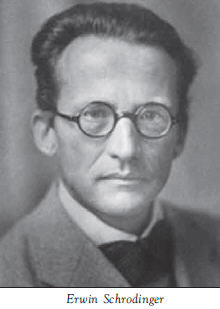
Do you really believe man never went to the moon?” Amit blurted out as soon as we sat down on a mat at the ISKCON Pune temple. Amit is an IIT student, introduced to Krishna consciousness a few months ago. When he came to know that, according to the Vedic scriptures man could not have gone to the moon, he had become immediately, immensely disturbed. As soon as he had reached Pune for a youth retreat, he had asked to talk with me as soon as possible.
Incredulity and indignation were writ large on Amit’s face. Seeing his troubled face, my mind flew back to the year 1997 when I had faced the same challenge to my faith. As a student, I had loved science as an excellent means to understand the world around us. It was my fascination with science that had initially attracted me to spirituality; when devotees had presented scientific evidence and reasoning establishing the existence of God and the existence of the soul, I had embarked on experimenting with experiencing spirituality. The moon controversy had jolted the honeymoon between science and spirituality that my heart was celebrating. Landing man on the moon was globally considered the crowning jewel of all the accomplishments of modern science. To have that conquest declared as a falsity was not easy to take. I hated the unpleasant choice that confronted me: choose either science or scripture. “Can’t there be a reconciliation of both?” I had wondered.
A dozen years later, I am a spiritual teacher, focusing on scientific presentation of spirituality. Amit is a budding devotee, proud of India’s scientific accomplishment in the lunar mission Chandrayaana, facing the same predicament that had once confounded me. I prayed for help as I started sharing the understanding that had led me out of my dilemma.
DIFFERENT SCALES OF OBSERVATION
“Amit, I understand your situation. I have been through it myself. Please tell me what exactly you have heard till now.”
“Devotees told me that Srila Prabhupada said we could not have gone to the moon because it is a higher planet. Without doing good karma, one cannot go there, just as without proper immigration clearance, one cannot go to America,”Amit answered, sounding skeptical about the logic of what he was repeating.
“Doesn’t this logic itself reveal a fundamental difference in the Vedic and modern worldviews? That difference holds the key to a reconciliation of the two.” I said.
“What is that?” asked Amit, warming up to the possibility of a satisfactory reconciliation.
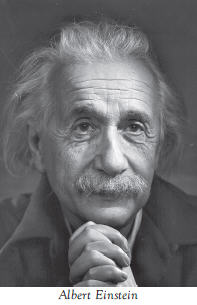
“Modern science sees the moon as a lifeless satellite, whereas Vedic science sees it as Chandraloka, a higher-dimensional planet inhabited by higher beings. Imagine two transparent glass beakers, one containing white chalk powder and the other, black charcoal powder. If we mix the two powders, we will get a grey mixture. But if we see the same mixture under a microscope, the grey particles will disappear; we will see only white and black particles. Which is the reality?”
“I am not sure; maybe both,” replied Amit, intrigued.
“Exactly,” I said. “What we see varies with our scale of observation. What is a grey powder to the naked eye is a mixture of black and white particles to the microscopic eye. Similarly, what is a lifeless planet at the human scale of observation is a higher-dimensional planet filled with higher beings at a divine scale of observation. Hence the seeming contradiction.”
I continued, “The Vedic texts themselves contain descriptions of cosmology based on both scales of observation. There are two main sources of cosmological information in the Vedic literatures the Puranas and the Jyotisha shastras. The Puranas describe cosmology from a divine perspective and they mention many features of the cosmos that are inaccessible to human observation. On the other hand, the Jyotisha shastras describe cosmology largely from a human perspective. Among the Jyotisha shastras are works on mathematical astronomy known as astronomical siddhantas. The siddhantic cosmology contains information similar to the information obtained from modern cosmology. For example, the Surya Siddhanta, one of the most important siddhanta shastras, states:
* The distance between the earth and the moon as 253,000 miles, compared to modern measurements of 252,710 miles.
* The Earth’s diameter is 7,840 miles, compared to the modern measurements of 7,926.7 miles.
The very fact that cosmic distances were measured with such precision in Vedic culture long before the dawn of modern cosmology is itself remarkable. It suggests that Vedic cosmology deserves to be studied with due respect, not dismissed summarily as unscientific due to some of its features being currently incomprehensible to us.”
WHERE MODERN COSMOLOGY FALLS SHORT
“This sounds interesting. But if everything depends on the scale of observation, then doesn’t that make everything relative and subjective?” Amit said slowly, pondering how to best put his thoughts into words. “I mean: isn’t there a reality? Aren’t scientific theories real? After all, scientific technology works look at the cellphones, the internet, the airplanes.”
“Doesn’t spiritual technology also work?” I asked, gently. “You have yourself told me earlier that since you started practicing mantra meditation, your anger decreased, your stress levels came down, your inner stability while facing problems increased. So, if what works is the standard to decide what’s real, then even spiritual principles should be considered real.”
“That’s true,” admitted Amit.
“Different things work at different levels. If our goal is to improve our external comforts and control, to increase our ability to manipulate the world around us, scientific technology works. If our goal is to improve our internal life, to increase our self-mastery, spiritual technology works. Modern science is fabulously successful in controlling a tiny slice of reality, but does it give a satisfactory explanation of the totality of reality?”
I repeated a quote from Nobel Laureate physicist Erwin Schrodinger, a quote that unequivocally admits the incompleteness of the scientific worldview:

‘I am very astonished that the scientific picture of the real world around me is very deficient. It gives a lot of factual information, puts all our experience in a magnificently consistent order, but it is ghastly silent about all and sundry that is really near to our heart that really matters to us. It cannot tell us a word about red and blue, bitter and sweet, physical pain and physical delight; it knows nothing of beautiful and ugly, good or bad, God and eternity. Science sometimes pretends to answer questions in these domains, but the answers are very often so silly that we are not inclined to take them seriously.’
“What to speak of explaining the existence of life on other planets, modern science cannot explain the existence of life on our own planet,” I asserted. Seeing Amit’s surprise, I elaborated, “We obviously know that life exists here because we exist here. But modern, reductionistic science claims that life is a result of chemical combination, but it cannot demonstrate or explain how life arises from chemicals.
“Not only can reductionistic science not explain how life arises, it also cannot explain why life arises. It offers no explanation about what the purpose of our existence is or what the values guiding our existence should be. That’s why eminent Indian scientist Dr. A.P.J. Abdul Kalam, in his book Ignited Minds, quotes Albert Einstein recalling Werner Heisenberg’s words to him: ‘You know in the West we have built a large, beautiful ship. It has all the comforts in it, but one thing is missing: it has no compass and does not know where to go.’
TOWARD A MORE COMPLETE COSMOLOGY
“To gain a more holistic understanding of the cosmos, we have to free ourselves from the rigid constructs of Euclidean and Cartesian three-dimensional geometry, which forms the basis of the modern scientific worldview. Let me read from the remarkable book Vedic Cosmography and Astronomy by the late Dr. Richard L. Thompson, a scientist-disciple of Srila Prabhupada, who pioneered the postulation of a new cosmology that integrated scientific and Vedic insights:
‘Radical extensions of our theoretical perspective have taken place repeatedly in the history of science. A striking example of this is provided by the revolution in the science of physics that occurred in the twenties and thirties of this century. At the end of the nineteenth century, physicists were almost universally convinced that classical physics provided a final and complete theory of nature. However, a few years later, classical physics was replaced by a new theory called quantum mechanics, which is based on fundamentally different principles. The most interesting feature of this development is that classical physics turns out to be compatible with quantum mechanics in the domain of observation in which it was originally applied. The differences between the two theories become significant only in the new atomic domain opened up by the quantum theory. Likewise, our proposed new cosmology would agree with existing theories in its predictions of gross sensory observations, but it would open an entirely new world of higher-dimensional travel.’
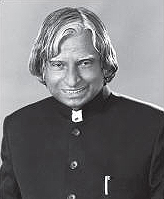
A. P. J. Abdul Kalam
I explained, “At one level, Vedic cosmology is compatible with modern cosmology, as seen from the above agreement in astronomical measurements. At another level, Vedic cosmology is more complete than modern cosmology, because of its ability to account for higher-dimensional cosmic realms, higher living beings and ultimately the higher purpose of life.”
“What exactly does Vedic cosmology teach?” asked Amit.
“Vedic cosmology is innately theistic and spiritual. It is based on the understanding that we are souls, spiritual beings, temporarily residing in our material bodies. We are all astronauts on a long multi-life cosmic journey through many, many bodies in many different parts of the cosmos. We are the beloved children of the Supreme Being, originally residing in loving harmony with Him in His abode. When we desired to enjoy separate from Him, we were sent to this material cosmos for experimenting with reality and rectification.
“The cosmos, the Vedas explain, is created and controlled by God, with the help of numerous assistants called demigods. The demigods are beings much more powerful than us, who reside in the higher regions of the cosmos. Soma, the presiding deity of the moon, is one of the demigods.”
As Amit reflected over what I was saying, I paused.
“I will need time to comprehend what you are saying,” he remarked after a pause.
“Obviously,” I laughed and replied. “I poured over dozens of books, shed intellectual sweat for many long hours, and prayed intensely to understand. The principle of humility is vital in approaching the magnificent works of God like the cosmos. We cannot expect to conquer the cosmos with our intellect and dominate it for our ends. Such an attitude implies that we are trying to become all-knowing and usurp God. This vain attitude will lead only to bafflement, as has happened to many scholars who had a non-devotional approach in their study of Vedic cosmology. A good example of a devotional attitude to cosmic research is the following quote of Johannes Kepler: ‘I have endeavored to gain for human reason, aided by geometrical calculation, an insight into His way of creation; may the Creator of the heavens themselves, the father of all reason, to whom our mortal senses owe their existence, may He who is Himself immortal, keep me in His grace and guard me from reporting anything about His work which cannot be justified before His magnificence or which may misguide our powers of reason, and may He cause us to aspire to the perfection of His works of creation by the dedication of our lives.”
THREE POSSIBILITIES
This explanation of the right approach to the subject seemed to relax Amit. “What actually happened with the moon flights then?” he asked.
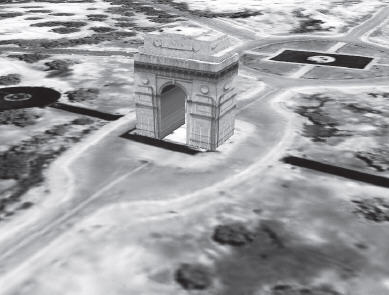
“That we can’t say for sure. Authoritative mathematics textbooks state that three plus three is six. If somebody says, according to his calculations, it’s not six, we know for sure he’s wrong. But we can’t know for sure what answer he got. Similarly, the Vedic scriptures authoritatively state that Chandraloka is a higher-dimensional planet with higher living beings. So if astronauts claiming to have gone there did not encounter any life there, we can know for sure that they have not accessed Chandraloka. But we can’t know for sure where they went.”
“Still, based on Srila Prabhupada’s statements, we can envision three possibilities,” I continued. “Firstly, let’s understand the concept of a higher dimensional object being projected to a lower dimension. A three-dimensional office address in Delhi (given by street name, apartment, and floor) can have a two-dimensional projection (given by name of street and apartment). Similarly, the higher-dimensional Chandraloka can have a three-dimensional projection, the moon visible to us with the naked eye. No matter how hi-tech our spacecrafts, they cannot take us beyond the three-dimensional reality that our sensory apparatus limits us to. On a map of India, which is a two-dimensional projection of the multi-dimensional reality India, if I move my finger from Rashtrapati Bhavan to India Gate, I cannot experience Rashtrapati Bhavan or India Gate, the people there, the tall buildings etc. Similarly, the astronauts may travel in three-dimensional space to the three-dimensional projection of Chandraloka, but not experience its higher-dimensional reality: Somadeva and the other residents, the heavenly opulences.”
Amit nodded thoughtfully. “What are the other two possibilities?” he asked.
“Srila Prabhupada said that the astronauts may have been subjected to a hi-tech diversion by the demigods. Consequently, they imagined they had landed on the moon, but had been grounded on some other relatively (relative to Chandraloka) lower planet like Rahu, which is ordinarily invisible to us due to its existing in a dimension higher than ours.
“Or the third possibility is that the moon flights may have been hoaxed; the astronauts may never have gone out of the atmosphere of the earth. For example, regarding the first American Apollo flights, there are dozens of books and scores of websites devoted to ‘the moon conspiracy theory’ with its proponents and opponents both vigorously presenting arguments and counter-arguments. Given the money, prestige, security, and technology involved, ascertaining the truth in such projects will be difficult and possibly dangerous.”
THE ULTIMATE COSMIC FLIGHT
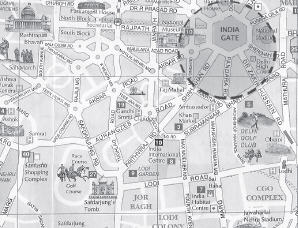
“Vedic culture is not against cosmic travel,” I concluded. “In fact, the perfection of life, according to the Vedic scriptures, is the ultimate cosmic flight; Vedic culture trains us to become transcendental cosmonauts and fly beyond the moon, beyond the sun, beyond the entire material universe, to the spiritual world, which is our eternal home.”
“This discussion has opened my eyes to the depth of Vedic cosmology and given me a lot to think about,” Amit remarked. “Perhaps only when our most cherished assumptions are challenged do we strive for a higher understanding.”
I couldn’t have put it better.
Caitanya Carana Dasa holds a degree in electronics and telecommunications engineering and serves full-time at ISKCON Pune. To subscribe to his free cyber magazine, visit thespiritualscientist.com
